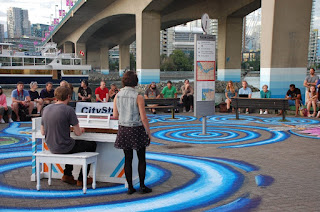Low
Cost innovative Ideas
1.
3D Printing
3D printing is a slow but steady industrial
revolution and a very current technology trend. It is a true innovation
engineering revolution regarding product design and manufacturing and it is
used for an increasing number of applications besides fast prototyping.
The addition of metal to the list of 3D
printing materials enables the manufacturing of low annual volume and
complex-shaped parts for the automotive and aerospace sectors that would be
very expensive to produce otherwise.
Another example is VRZ2, a fully 3D printed
bicycle using titanium.
A completely different application is
food-making. Chef Bernard Faucher ‘cooks’ 3D printed pasta at Google
headquarters. During the printing process, he can control temperature and
cooking time depending on the type of food.
2.
Smart ring for
payments and people identification
Cost: 100$-150$
With
its contactless NFC technology, the ring does not need charging or changing its
batteries since it does not rely on power, just like a credit card. It offers
different options, from payment to people identification, access control,
transportation tickets, etc. With a military-level safety, all the information
is perfectly protected and only the ring’s owner can activate it and use it.
NFC stands for near-field communication, a
radio protocol similar to radio-frequency identification (RFID) tags.
The NFC Ring can communicate with any other
device containing an NFC chip. For example, you can unlock your smartphone or
tablet simply by sliding the ring along the back of the device. You can also
unlock an NFC-enabled door with a tap of the ring.
3. Self-adjustable liquid Filled eyeglasses
Cost: 20$-40$
Refractive error occurs when the shape of the
eye stops light entering the eye from being correctly focused.
Myopia is one of the most common forms of
refractive error, impairing a person’s ability to clearly see objects that are
far away. It may occur if the eyeball is too long or there is too much
curvature in the cornea – the transparent layer covering the front of the eye.
Such abnormalities result in blurred vision when looking at distant objects.
Both the Adspecs and the newer model of
self-adjustable glasses work on the same principle to correct the refractive error;
they consist of a fluid-filled lens technology that allows the wearer to adjust
the power of the lens until optimal vision is reached.
Each lens is made of two flexible membranes
that move either inward or outward depending on the amount of fluid – a
silicone solution – they contain.
The lenses are connected to a small syringe
that sits on each arm of the glasses, and the wearer can adjust a dial on the
syringe to pump fluid in or out of each lens. When fluid is pumped in, the
power of the lens is increased – correcting hyperopia, or farsightedness –
while pumping fluid out decreases lens power, correcting nearsightedness.
4.
Leverage your most innovative
staff
Smaller governments are often too stretched to
have more than a person or two focused on innovation full-time. To better take
advantage of those who can dedicate their time to it, some companies began
holding government-wide office hours this year. In-Service Design Studio, as
the open office is called, any city employee can
ask members of NYC Opportunity’s design and product team questions about
innovation: how do you develop a prototype? Find people for user research?
Get stakeholder buy-in?
It proved wildly successful, with over 100
office hours held from August to October 2018. Soon, the Service Design Studio
was getting requests from outside New York City’s government from California
and Rhode Island to Denmark and Thailand.
While NYC Opportunity likely has more
resources than smaller agencies across the globe, a pared-down version of the
Service Design Studio- where employees well-versed in design, data or digital
government answer others’ questions could go a long way in improving cross-team
innovation.
5.
Use students to supplement
staff shortage
In Vancouver;s CityStudio, Students work
directly with public servants on city improvement projects like neighborhood
regeneration schemes and bike repair stations.
The collaborative classroom is embedded in
City Hall, where officials can oversee students and provide advice and
insight---similar to a teaching hospital, but for public policy.
One group of CityStudio students successfully
implemented a public piano project that the city had initially dismissed.
Local colleges and universities send students
interested in urban design and public policy to CityStudio, where they pitch
ideas for projects to public servants, then design, prototype and test them
independently.
The students gain invaluable work experience,
and overburdened public servants get help launching creative projects designed
to delight citizens.
6. Biodiesel Production from Waste Cooking Oil by Using an
Ultrasonic Tubular Reactor
The aim of this research is to find an optimum synthesis biodiesel
from waste cooking oil (WCO) using an ultrasonic tubular reactor. The
experimental studies explored the variations in reaction time, molar ratio WCO
to methanol (MeOH), amount of catalyst, the frequency of ultrasonic and output
power ultrasonic on the ester contents. Comparisons of type ultrasonic and also
the mechanical stirring method based on time reaction were investigated.
The optimum results of
the biodiesel process is the reaction time of 5 minutes, NaOH catalyst 1%wt of
WCO, molar ratio WCO to MeOH of 1:6, frequency ultrasonic of 20 kHz and output
power ultrasonic of 650 W. The reaction time reduced 12-24 times compared to
both methods and the yield of ester contents were obtained at 96.54%wt.





No comments:
Post a Comment